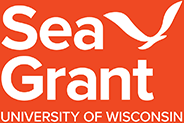Introduced - where Great Lakes stories meet invasive species science.
Introduced is an award-winning podcast featuring stories about the Great Lakes, introduced species and the people working to protect our waters. The podcast is brought to you by Wisconsin Sea Grant, with support from the Great Lakes Commission.
Listen to Introduced wherever you get your podcasts.
Latest Episodes
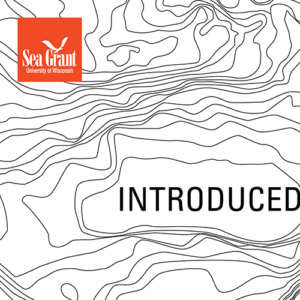
The seventh graders who changed Wisconsin’s lakes
We uncover the story of how a popular watercraft inspection program (Clean Boats, Clean Waters) evolved from a middle school science project in Northern Wisconsin.

When life hands you carp
When life gives you lemons, you make lemonade; when life gives you carp, you make carp leather pants! Meet Kim Boustead, who turns invasive species into art. From buckthorn ink to fish leather, Kim shares her journey of transforming unwanted materials into useful creations.

A new lens
What happens when we look at invasive species through the lens of art? In this episode, Jenna takes us to an immersive art exhibit that reimagines Lake Michigan’s invasive species challenges in a surreal, sci-fi-inspired world.

The story of starry
When starry stonewort was first discovered in a Wisconsin lake, alarm set in—officials scrambled, residents feared the worst, and drastic measures were taken. But ten years later, an unexpected truth has emerged: sometimes, the best response to an invasive species is to do less, not more. In this episode, we unravel the science behind how humans react to new invaders, challenge fear-based messaging, and explore the power of waiting and watching.
Looking for ways to tone down your language around aquatic invasive species? Here are some helpful phrases created by our guest Jeanne Scherer:
Non-native species are known to have varying degrees of impacts depending on the specific waterbody they are found in, and in some cases are able to integrate into a waterbody to the extent where actual documented impacts are minimal and active management may not be necessary.
Reporting invasive species is a first step in containing their spread. Maintaining and restoring our waters and landscapes can reduce the impacts even when we don’t have other management options to an invasive species.

Bonus Episode: Dirty Laundry, Invasive Species, and the Limitations of Knowledge
Today, we’re airing a bonus episode from Points North, a podcast about the land, water, and inhabitants of the Great Lakes from Interlochen Public Radio.
Invasive species often spread by hitching a ride on anglers, especially anglers who don’t clean their gear after fishing. Though this is widely known, research suggests many anglers still don’t clean, even though it protects the very thing they’re after – fish. So, can anything be done to change their minds? Hear about New Zealand Mudsnail in Michigan.

The beetle, the fabric, and the seamstress
How can art help communicate invasive species science? Today, we’ll meet an artist on a journey to turn some thrifted fabric into a biocontrol bug that is larger than life!

Names that rock
Introduced is back for Season 3! In this episode, we explore the names we use for invasive species. How do species get their names? And what real-life consequences can these names bring?

Listening through time
Today, on the last episode of season two, we’re talking about climate change, which threatens to upend everything western science understands about native and invasive species. First, we join the Great Lakes Indian Fish & Wildlife Commission climate change team as they carefully observe the seasonal relationships between all the beings in the forest. Then we talk to the Tribal Climate Adaptation Menu team, who are helping tribal nations find ways to assert their knowledge and adapt to climate change. Finally, we step back 20,000 years to see what paleoecology can teach us about how species move as the climate changes.

Moss balls and mystery seeds
This week, we dive deep into two news stories that flew under the public’s radar. In the summer of 2020, individuals all over the country started receiving random packages of unsolicited and unidentified seeds. In the spring of 2021, pet stores around the country found that the moss balls on their shelves carried a notorious aquatic hitchhiker. On this episode, we talk to some of the people who devoted months of their lives to dealing with these first-of-their-kind international crises.

Crayfish crisis (Rerun)
On August 27, 2009, the Wisconsin Department of Natural Resources gets a call about small lobsters crawling around a neighborhood pond in Germantown. The extent of the problem is more than anyone bargained for.

The lake on the edge
The miniscule Spiny waterflea was introduced into Madison’s Lake Mendota and lurked undetected for years. This hour, Bonnie and Sydney take a new look at a well-studied lake and try to figure out how an introduced species can float below science’s radar for so long.

Faith and wild rice
Wild rice faces challenges like introduced species, pollution, habitat destruction and climate change. We learn how the Sokaogon Chippewa Community cares for this wonderfully resilient being. Opinions of our guests do not necessarily reflect the opinions of the Sokaogon Chippewa Community Mole Lake Band of Lake Superior Chippewa.

An appetizer
Sydney debriefs Bonnie on what it was like to filet her very first fish, which happened to be a silver carp.

On the scent
Canines Betty White and Ernie are training to detect the scent of New Zealand Mudsnail, and Sydney goes bow hunting for flying carp. Also, we talk to a group that is trying to make carp burgers the next popular tailgating food.

A borrowed fish
Pacific salmon were introduced into the Great Lakes to control nuisance alewives. Now, alewives and salmon are both being challenged by a new wave of introduced species.

The snail next door
Even the smallest snails can mean big changes for the region’s lakes and streams. We visit the Fond du Lac Band of Lake Superior Chippewa, where mystery snails encroach on wild rice, and track the spread of New Zealand mudsnail across Wisconsin trout streams.

Peering Through The Smelt Crystal Ball
Smelting became a beloved tradition after rainbow smelt were introduced into the Great Lakes. How did smelt get introduced, how do they fit into the food web and what happens when humans fall in love with a non-native species?

Becoming Invasive
Who gets to decide where a species belongs? What does it mean for something to be “invasive?” The term “invasive species” is commonly used by researchers and academics. But as the authors of the Dibaginjigaadeg Anishinaabe Ezhitwaad – A Tribal Climate Adaptation Menu developed the indigenous resilience guide, they spent long hours reckoning with the term “invasive,” along with a slew of other Western terms like “climate change” and “management.” Next, we speak to scholar Paul Robbins, whose personal journey with invasive species started with a flat tire in Rajestan, India. Since then, he’s studied human interactions with nature and the politics of natural resource management. Lastly, we join a group of reptile and amphibian experts who are debating if a popular pet turtle species, the red-eared slider, should be listed as prohibited or restricted in Wisconsin’s invasive species law.

BONUS – The Claws Have the Sweetest Meat
We’re excited to share an episode of Teach Me About the Great Lakes featuring the Introduced team! This episode is all about invasive species generally, and invasive crayfish specifically. TMAGL speaks again with Dr. Brian Roth about his work on invasive crayfish and with IISG’s own Greg Hitzroth about the Invasive Crayfish Collaborative. Plus, in a special bonus, we speak with the hosts of Introduced, a highly produced, episodic podcast about invasive species from our colleagues at Wisconsin Sea Grant.
Today’s guests are Dr. Brian Roth of Michigan State University, Greg Hitzroth of Illinois-Indiana Sea Grant, and the producers of the Introduced podcast: Bonnie Willison, Sydney Widell, and special guest Tim Campbell.

Crayfish crisis
On August 25, 2009, the Wisconsin Department of Natural Resources gets a call about small lobsters crawling around a neighborhood pond in Germantown. The extent of the problem is more than anyone bargained for. Here’s the story of the first red swamp crayfish introduced into Wisconsin.
Thanks to our guests Tim Campbell, Pete Jopke, Tim Zabel, Heidi Bunk, Scott Van Egeren, Esquire Estates residents Doug and Mary, Dr. Jake Vander Zanden, Erin Vennie-Vollrath, Chris Hamerla, Dr. Stephanie Peay.

Invasives online
After a dive into the world of fish collectors and a conversation with a DNR detective, Bonnie and Sydney want to know just how easy it is to buy aquatic invasive species online.
Special thanks to our guests Ted Judy, Robert Stroess, Tim Cambell and Erika Jensen.

Flipped
Bold plans to remove invasive species from Lake Wingra and Crystal Lake lead to some unintended consequences down the line.
Special thanks to our co-host Tim Campbell and our guests Dr. Dick Lathrop and Dr. Greg Sass.

From revered to reviled
How does a group of fish valued in their home range come to be some of America’s most reviled villains? Sydney and Bonnie explore a surprising collaboration between American and Chinese researchers, and see how Ontario is bracing for an Asian Carp introduction.
Special thanks to our guests Duane Chapman, Yushun Chen and Rebecca Schroeder

The carp are coming (Asian Carp part 1)
Wisconsin Sea Grant takes a trip to the world’s largest electric fish dispersal barriers, just south of Chicago. These barriers are sending electricity into the canal for one purpose- to keep Asian Carp from swimming into the Great Lakes.
EDIT: In this episode, we state that the dense and reproducing carp population is 20 miles downstream of the electric carp barriers. This is incorrect – the dense and reproducing Asian Carp population is located 100 miles downstream of the barriers in the Peoria and La Grange pools of the Illinois River.
Special thanks to our guests Duane Chapman, Tim Campbell, Kevin Irons, Elena Blevins and Titus Seilheimer. Thank you to the US Army Corps of Engineers and Chuck Shea for a tour of the electric barriers. How to identify Bighead, Silver, Black, and Grass Carp Up-to-date information about Asian Carp in the US

Bringing home the Beetles
When a showy, fuchsia plant runs amok in Wisconsin wetlands, researchers send a tiny beetle to the rescue. But the beetle isn’t native here, either. Resources: Identifying Purple Loosestrife Beetle Smorgasbord and other resources for teachers Raising your own beetles
Special thanks to our guests Molly Bodde, Tim Campbell, Brock Woods and Jeanne Scherer.

The ones that live in your house
While on a field trip, a UW-Madison class discovers a feral goldfish in a local stream. Their find is only the beginning of Wisconsin’s pet problems.
Special thanks to our guests Rob Mooney, Ben Martin, Dr. John Lyons and Jamie Kozloski.

Crayfish, cargo and chaos: How we got here
Bonnie takes a time travel tour of the Great Lakes while Sydney follows scientists on a decades-long quest to decipher a Wisconsin legend.
Special thanks to our guests Dr. Dick Lathrop, Carol Warden, Tim Campbell, and Titus Seilheimer.

Introduced Trailer
Introduced, a new podcast from Wisconsin Sea Grant, is all about aquatic invaders and stories from our changing waters. Subscribe on iTunes, Spotify, or Google Play.
Credits
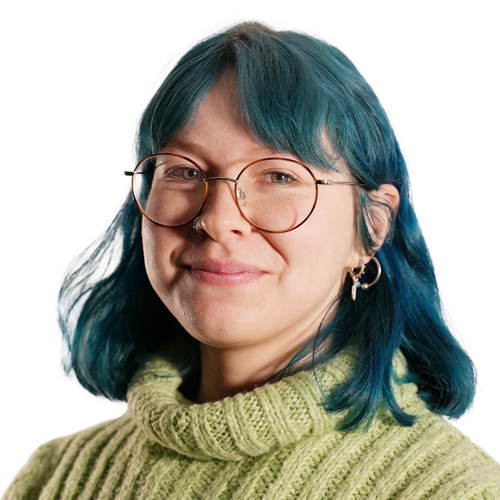
Bonnie Willison | Executive Producer
Video and Podcast Producer
What I do at Sea Grant
Bonnie produces videos and podcasts about Great Lakes science and outreach for Wisconsin Sea Grant.
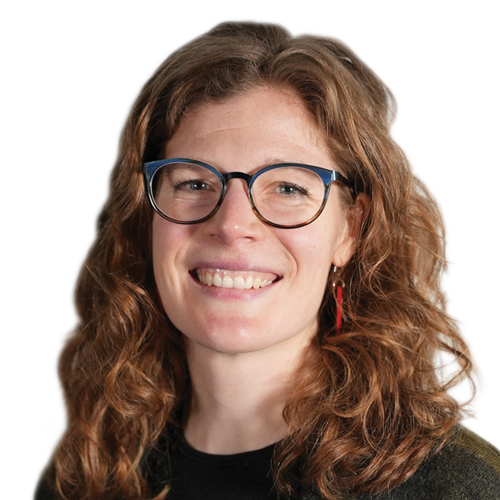
Jenna Mertz | Writer, Producer
Writer
What I do at Sea Grant
Jenna writes about the research and outreach work of Wisconsin Sea Grant to build understanding of and stewardship for Wisconsin’s waters and the Great Lakes.

Tim Campbell | Producer
Aquatic Invasive Species Program Manager, National AIS Liaison
What I do at Sea Grant
Campbell engages communities, organizations, local government officials and other coastal stakeholder groups and helps them incorporate aquatic invasive species (AIS) prevention actions into their existing activities.
He also works closely with the numerous professionals working on AIS issues statewide and nationally to coordinate education and outreach efforts.
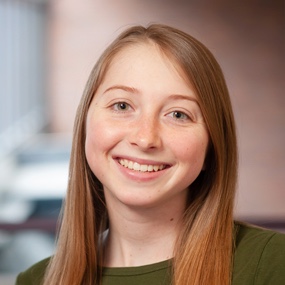
Nichole Angell | Producer
Program Specialist, Great Lakes Commission
What I do at GLC
Nichole works on various Aquatic Invasive Species projects including the Invasive Mussel, European Frog-bit, and Phragmites Collaboratives, as well as the Great Lakes AIS Landing Blitz. She also provides staff support to the Great Lakes Panel on Aquatic Nuisance Species.
